Lost treasure stories of Maine thrive. With its long history and it being right on the east coast of the United States pirates many times flocked to the shores of this state to seek refuge and hideout. They would oftentimes bury their treasure here for safekeeping thus the many buried pirate treasure stories you hear that come out of the state of Maine.
In this article, we will explore the history of the state of Maine and the lost treasures that might be buried beneath the earth here. You will enjoy the buried pirate treasure of Blackbeard to sunken ships and everything in between.
So get ready as I introduce you to the 16 lost treasures of Maine!
16 Lost Treasures of Maine
| TREASURE | AMOUNT | LOCATION |
|---|---|---|
| Blackbeard Treasure on Smuttynose Island | Unknown | Smuttynose Island on the Isle of Shoals |
| Pirate Treasure of Sam Bellamy and Paulsgrave Williams | Unknown | Near the mouth of the Machias River in Maine near where a present-day bridge now stands off of State Highway A1. |
| Captain Kidd’s Buried Treasures | Unknown | various Islands in Maine |
| Pirate Treasure of Haskell Island | Unknown | Haskell Island |
| Dixie Bulls Buried Treasure | $400,000 | Damariscove Island and Cushing Island |
| Captain John Quelch’s Buried Treasure | Unknown | Star Island |
| Pirate Edward Lowe’s Treasure | Spanish Gold and Silver Coins | Pond Island |
| The Wreck of The City of Portland Steamer | Gold and Silver Coins | The shores of Monroe Island |
| Portuguese sailor’s Buried Treasure | $50,000 in gold and silver coins | St. John’s Island in Casco Bay |
| Treasure’s Near Fort Williams | Silver coins from the 1700s and artifacts | Fort Williams Park in Cape Elizabeth, Maine |
| Wreck of The H.M.S. Astre | 100 pounds of sterling silver and gold coins | Kitty Point across from Portsmouth, Maine. |
| Farmer Finds Treasure | $1.5 million in gold and silver coins and jewelry | Deer Island |
| Baron’s Lost Treasure Chests | 5 chests of silver and gold coins | Near the village of Pentagoet, Maine |
| Wreck of the Royal Tar | $35,000 in gold and silver | Bottom of Penobscot Bay |
| Jim Dolliver’s Buried Gold | $10,000 worth of gold sovereigns | Between Manchester and Murphy’s Maine along the Old French Trail |
| The Lost Treasure of Timothy Barrett | $70,000 in gold coins | Near the town of Liberty, Maine |
The Many Lost Pirate Treasures of Maine
Back in the seventeenth, eighteenth, and nineteenth centuries, Maine was a port of call for many pirates. And as they hid out on the Islands of Maine, it is the legend that they buried many of their precious booties here.
The following are some of the many stories of pirates burying their treasure’s in Maine!
Blackbeard Treasure on Smuttynose Island
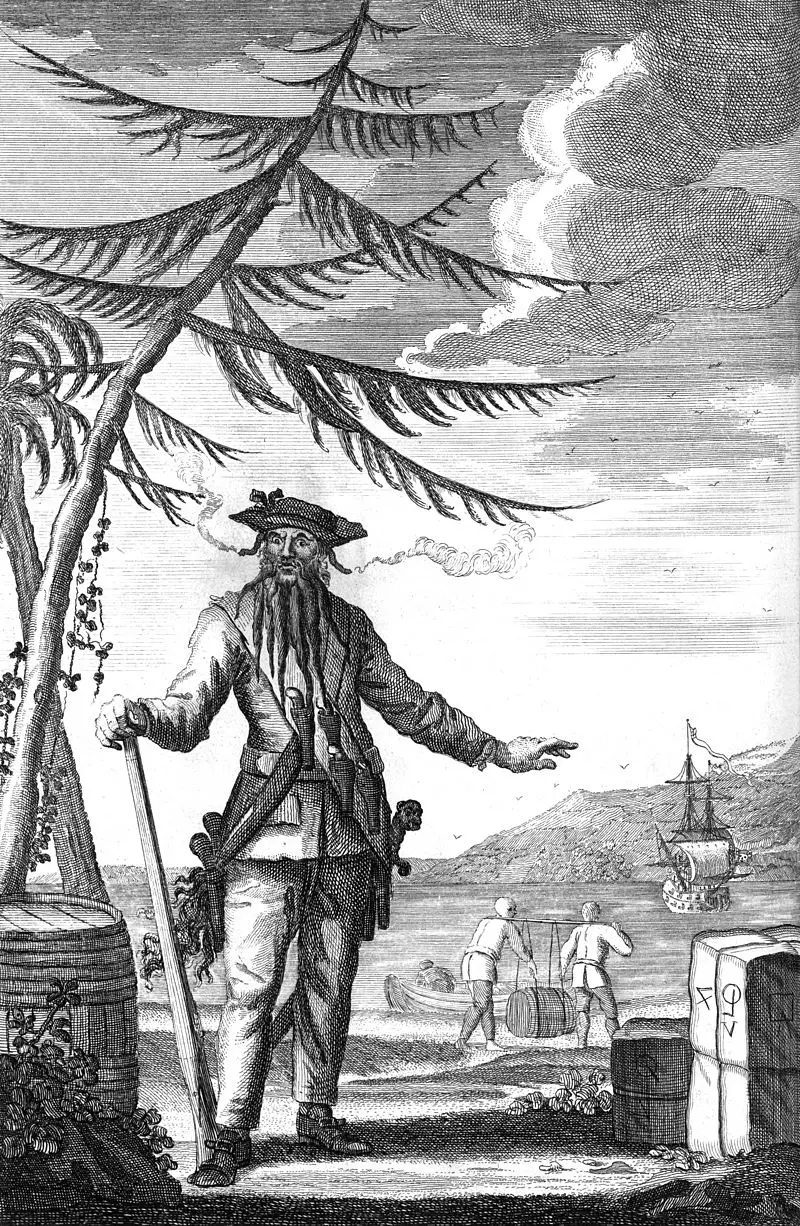
Blackbeard’s real name was Edward Thatch was an English pirate in the early 1700s who terrorized the West Indias and the east coast of North America. Legend has it that Blackbeard visited Maine during the latter part of his life.
Blackbeard is said to have honeymooned on Smuttynose Island on the Isle of Shoals with his 14th or 15th wife, Martha Herring. But the honeymoon didn’t last as Blackbeard spotted a fleet of British warships closing in on the Island. Blackbeard quickly unloaded the treasure from his ship and buried it on the Island. It is said that he sailed away leaving his wife behind to look after the buried treasure.
He ended up being beheaded and was unable to return for his buried treasure. Reports say his wife died in 1735 on Smuttynose Island. If the treasure is still there it would be worth a mighty sum to say the least!
Pirate Treasure of Sam Bellamy and Paulsgrave Williams
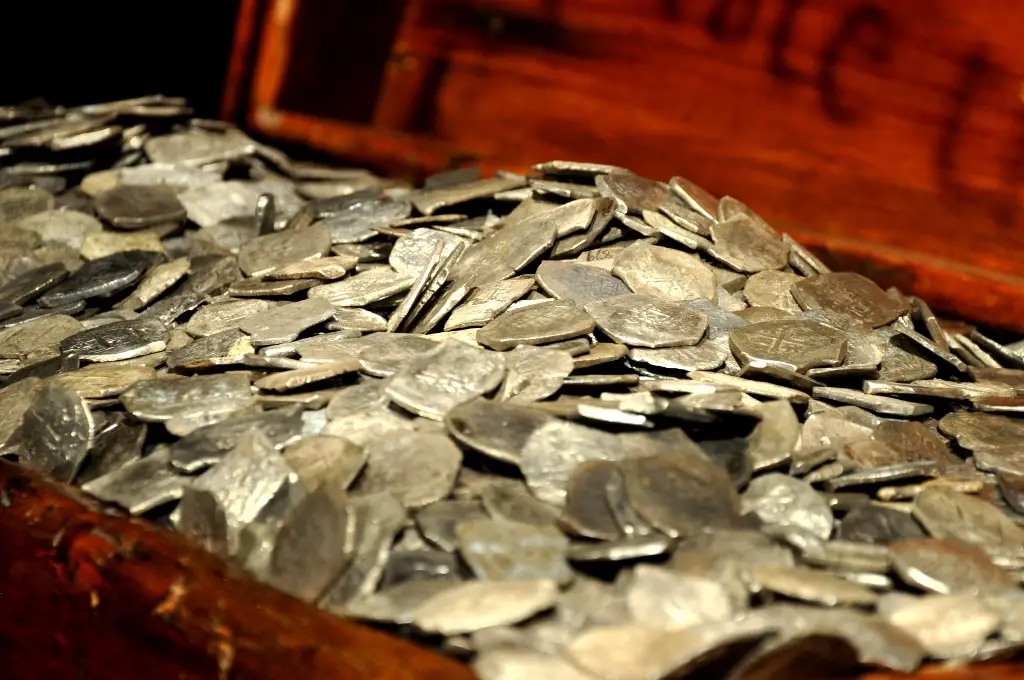
Sam Bellamy and Paulsgrave Williams were a pirating duo in the early 1700s. After pillaging in the waters of the Caribbean they eventually made their way to the east coast of the United States where they landed and spent some time in Maine.
They made their way up the Machias River and built a wooden fort along her shores. After years of piracy, they accumulated quite a bit of booty and needed a place to store while they went out for more. So they buried a large portion of their treasure here.
Bellamy decided to go on another run for more booty and Williams decided to go to Rhode Island to see his family. They agreed that they would later meet up at their fort in Maine. Neither man made it back to Maine.
Bellamy took his ship the Whydah to capture more ships in which he succeeded but on April 26, 1717, the Whydah was caught in a noreaster off the coast of Cape Cod and sank with Bellamy and most of his crew on board.
By all accounts, the treasure is still buried near the mouth of the Machias River in Maine near where a present-day bridge now stands off of State Highway A1.
Captain Kidd’s Buried Treasures
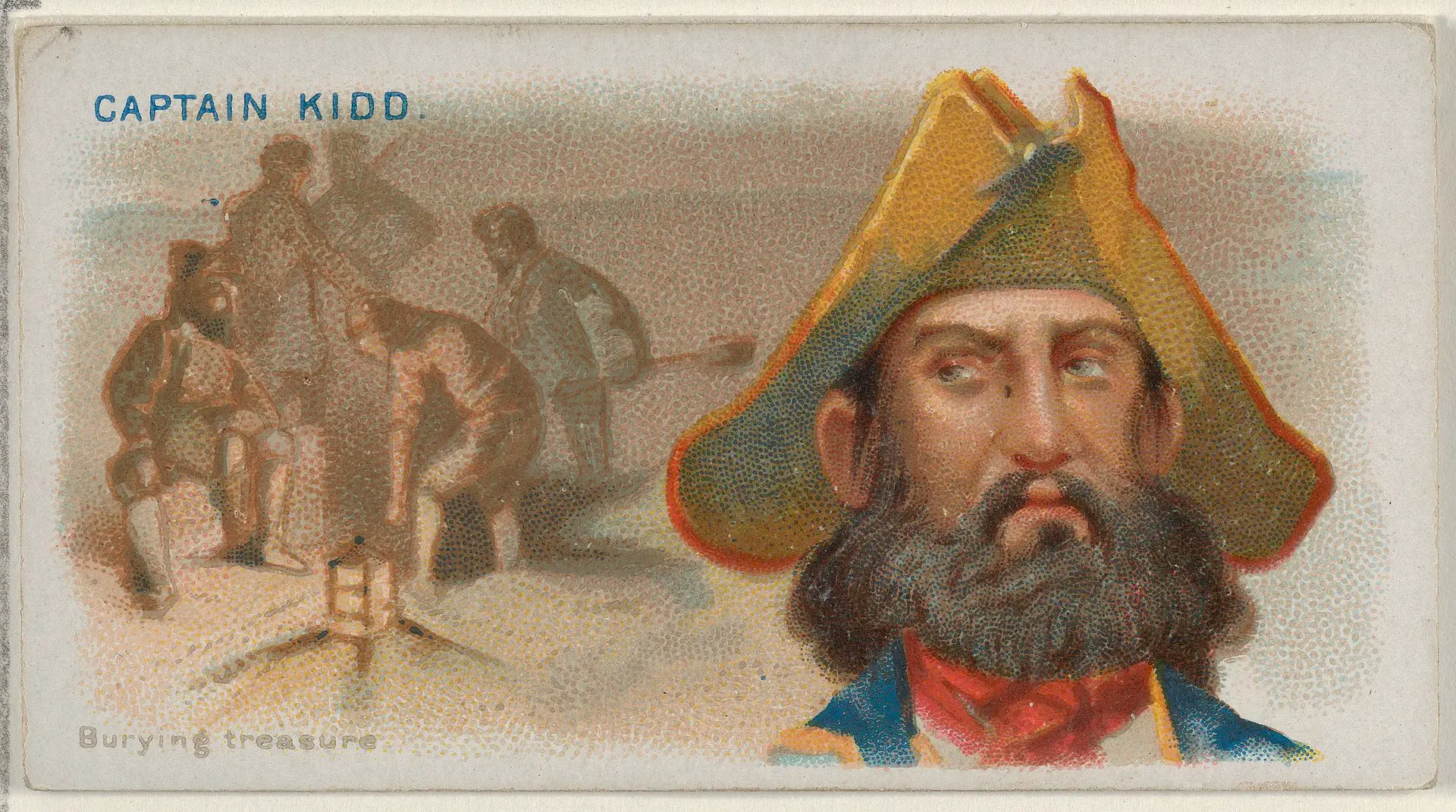
The famous William Kidd aka Captian Kidd was a Scottish Captain turned privateer and pirate. He was executed in 1701 in London on murder and piracy charges. But before that time he was a very successful pirate who sailed all over the Caribbean, Southern Africa, and the east coast of North America.
There are a few stories of Captain Kidd burying treasure on various Islands in Maine. One such story says that Kidd set anchor on Folly Island which is now called Davis Island. It is said that he buried treasure here.
There are some 45 buried treasure tales of Captain Kidd most around the area of Wiscasset. Maine in Lincoln County. Gold and silver caches have been found over the years in this area. So some of the tales may be true.
But beware if you plan on venturing out to Davis Island most of it is now privately owned so you will want to get permission before going on anyone’s property.
Pirate Treasure of Haskell Island
Haskell Island is located off of Harpswell Neck, Maine in Sagadahoc County. This island was named after Captain Haskell. This island is only accessible by water so it would have been the perfect place to bury a treasure.
Dixie Bulls Buried Treasure
Dixie Bull “ The Dread Pirate” made his fortune off of the shipping industry in New England waters during the seventeenth century. He was one of the first pirates to take advantage of these shipping ships and thus made a fortune for himself. He also raised havoc in the small villages that dotted Maine’s coastline.
Legend has it that he buried $400,000 in treasure on Damariscove Island and Cushing Island. By all accounts, Dixie Bull returned to England leaving his treasure buried on those two Islands. If the treasure is still there it would be worth a handsome sum.
Captain John Quelch’s Buried Treasure
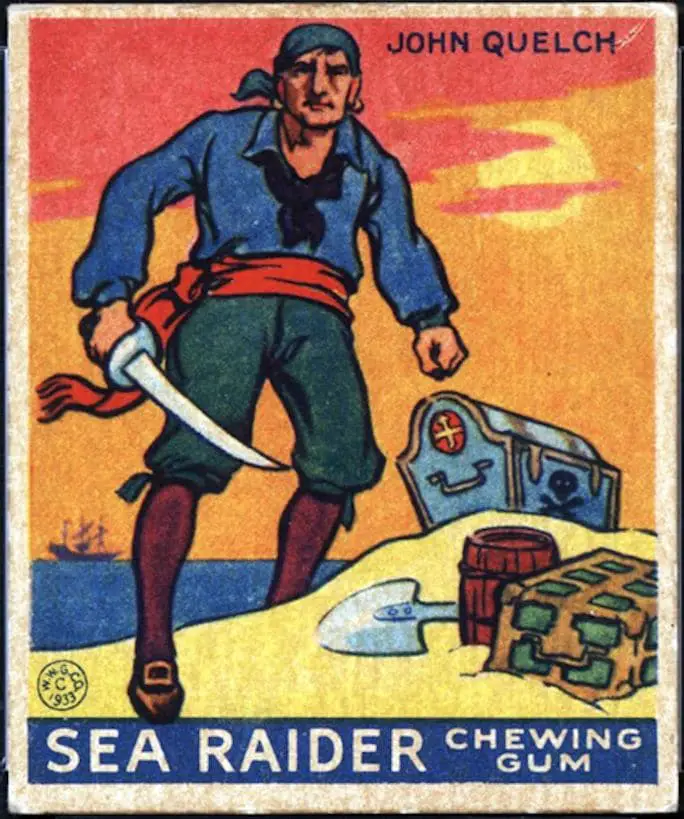
Captain John Quelch was a short-lived English Pirate in the early eighteenth century. He was only a pirate for one year before he was caught and put on trial for piracy. Legend has it that Captain Quelch got separated from his crew and was caught in Boston for raiding a Portuguese ship. He was thrown in jail.
Finding this out Quelches men took off on their ship and sailed to the isle of shoals where they quickly buried the remaining treasure on Star Island before they were caught by Samuel Sewall one of the judges from the Salem Witch Trials.
The treasure has never been found and could still be buried on Star Island awaiting discovery!
Pirate Edward Lowe’s Treasure
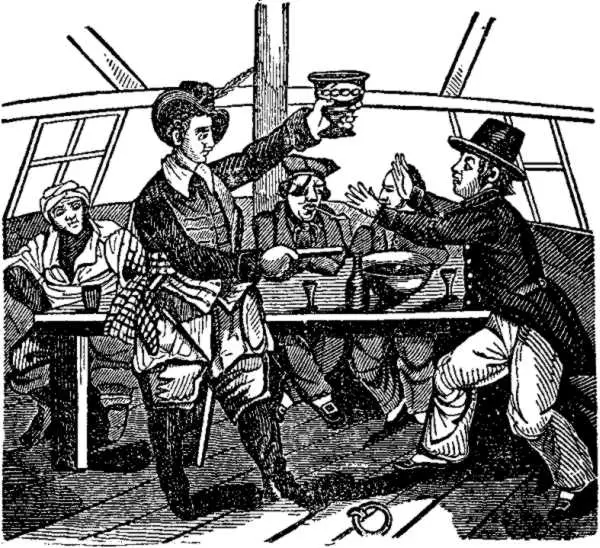
Edward Lowe was born in 1690 in Westminster London. In his early years, he was a petty thief. When he was a young adult he moved to Boston Massachusetts and soon after became a pirate. He became one of the most feared pirates of the time. Lowe would hijack ships along the New England coast and the Caribbean.
One story of Lowe states that he and his crew took over a Spanish Galleon ship that was sailing from Havana to Spain. A large amount of silver and gold coins were taken by Lowe from this ship. Lowe and his men sailed into Casco Bay and set anchor on Pond Island.
It is here that it is said that he buried the plunders from the Spanish galleon. There might be some truth to this story because there have been caches found of Spanish gold and silver coins found on Pond Island by treasure seekers over the years.
Is there more to be found? It would be well worth someone’s time taking a metal detector to Pond Island and do some treasure hunting there.
Along with these pirate legends, there are many more from unknown pirates. Most of these lost treasure legends are centered around the islands that dot Casco Bay in Maine. Some treasure has been found and I believe there is much more scattered on these islands.
The Wreck of The City of Portland Steamer
The City of Portland was a steamship that sank off of Monroe Island in Maine on May 8, 1884. Surprisingly no lives were lost that day. It is reported that the survivors made it to the shores of Monroe Island. While they were there they allegedly buried gold and silver coins.
How did they get their precious cargo ashore? Who knows. They might have had time to load it on lifeboats and brought it to shore that way. The ship’s cargo may have also washed ashore and got buried in the sands there as one report claims.
Portuguese sailor’s Buried Treasure
A Portuguese sailor is said to have hidden $50,000 in gold and silver coins near a tavern that was constructed in the 1700s. The tavern was located on St. John’s Island in Casco Bay Maine. As far as is known the treasure has never been recovered and could still be hidden on the northern end of St. John’s Island.
Treasure’s Near Fort Williams
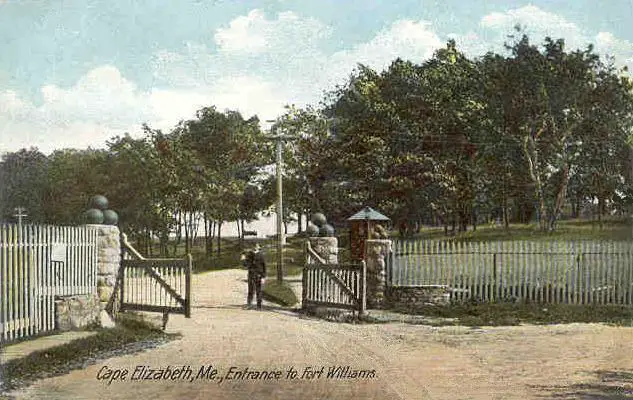
Fort Williams was a U.S. Army fort that operated in Cape Elizabeth, Maine from 1872 to 1964. It is now called Fort Williams Park. In the 1700s many ships sank close to this fort because of battles and strong winter storms.
Many Spanish silver coins have been found along the shores here presumably washing ashore from the numerous wrecks in the area. Some places to search would be the Portland lighthouse and on the beaches here. Silver coins from the 1700s and artifacts await discovery!
Wreck of The H.M.S. Astre
A British warship the H.M.S. Astre caught fire in 1743 and its crew ran it ashore at Kitty Point which was close to Portsmouth, Maine. The ship blew apart here and scattered over 100 pounds of sterling silver and gold coins all over the beaches in the area.
It’s been reported that people have been finding these coins on the beaches over the years and I’m sure there are many more coins to be found on the beach and in the waters there.
Farmer Finds Treasure
A farmer who was plowing his field on Deer Island in 1899 plowed up $1.5 million in gold and silver coins and jewelry. He only spent a portion of the treasure and decided to bury the rest on the Island because people of the Island were trying to lay claim to the treasure that he had found.
To this day the treasure has not been found and by all accounts, the farmer died before he could fully appreciate his find.
Baron’s Lost Treasure Chests
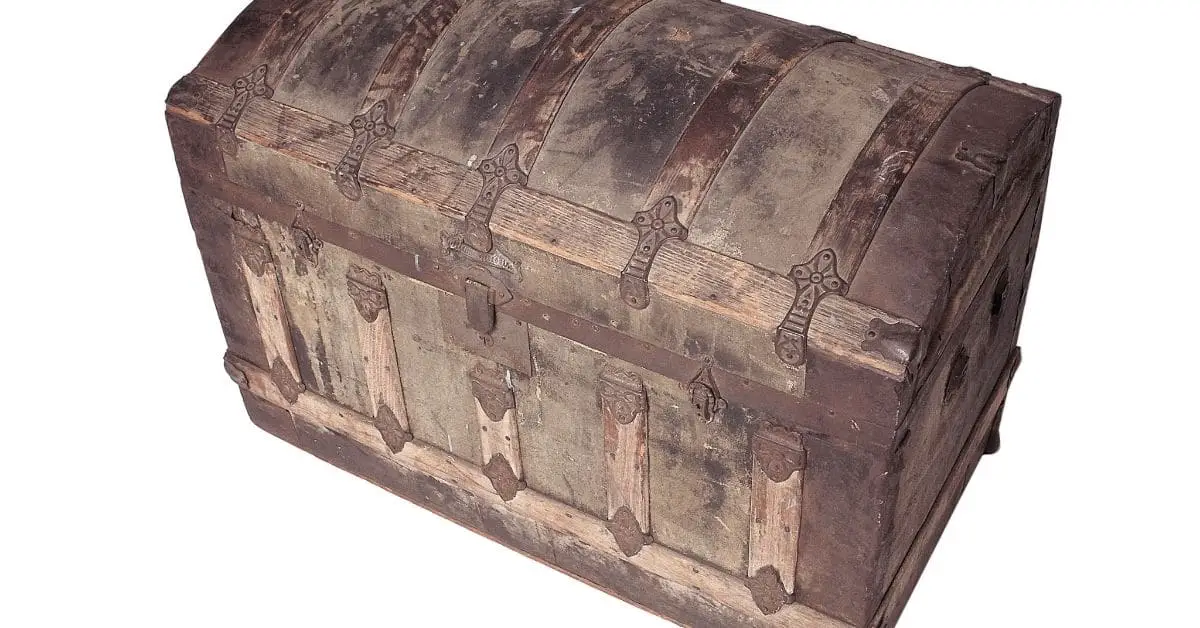
A man named Jean-Vincent de lAbadie, Baron de St. Castine took possession of land off of Penobscot Bay in 1665. He ran a successful trading post in the village of Pentagoet for almost 25 years. He made a lot of money over the quarter-century that he was in business.
The Baron ended up fleeing the area because of the continuous attack by the British. He took his fortune with him that reportedly was hauled in six chests. It is said that when he was fleeing the village he buried his treasures. He subsequently went back to England and died there before he could return for the treasure.
Fast forward about 150 years in 1840 a man named Captain Stephen Grindle and his son Samuel were hauling lumber about six miles from the village of Pentagoet and found a French crown in the dirt. They dug until dark and found 20 more of those crowns. They had to hold off digging because a blizzard came upon the area so they waited until spring to resume their digging efforts.
More Coins Found
The Grindles dug up a total of 500 coins in that area including coins from Holland, France, Spain, Massachusetts, South America, Portugal, and England. Presumably, this was part of St. Castine’s buried treasure from the 1600s.
150 Pine Tree Shillings and sixpence were also found a few years later by a relative of the Baron de St. Castine. These coins dated from 1652 and were the first type of coins struck in the colonies. Each one is worth a handsome sum!
In 1855 a man named Conolley dug up a chest containing clothes and other possessions presumably belonging to Barron. So one of the six chests that the Barron reportedly took with him was found. There should be five more chests of treasure still waiting to be dug up.
Wreck of the Royal Tar
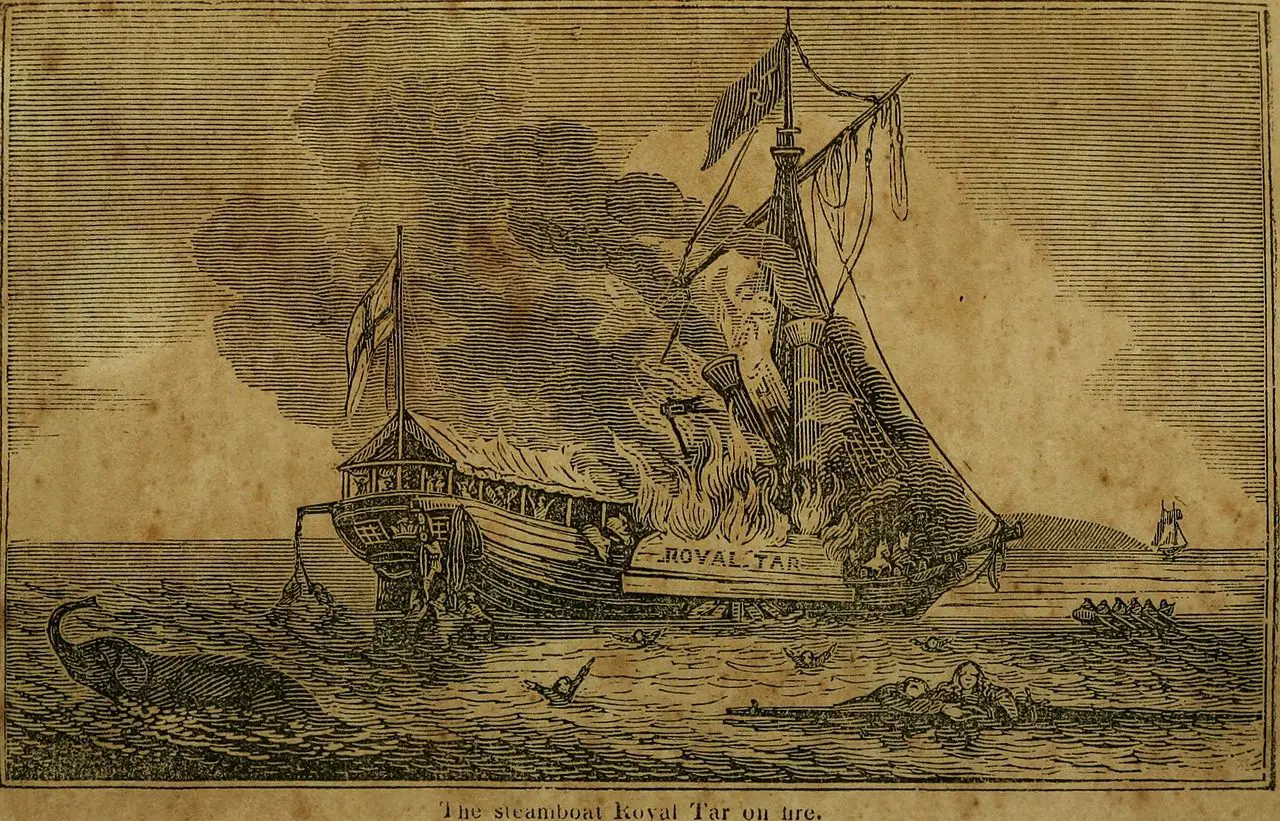
The Royal Tar was a sidewheeler steamship that sank in Penobscot Bay in 1836. It was hauling a circus act that was coming back from New Brunswick, Canada. On this voyage, the steamer had to lay anchor many times because of an October storm that was in the area.
The Royal Tar had to finally anchor off of Fox Island in Penobscot Bay on the afternoon of October 25, 1836, because her boilers were getting low on water. The ship ended up catching on fire and all was lost. It is said that there was a safe on board with $35,000 in gold and silver in it. The ship was lost to fire and sank with the safe still on board.
The ship and the safe were never seen again and by all accounts, both still lay on the bottom of Penobscot Bay waiting for a treasure-seeking dive team to recover the treasure.
Jim Dolliver’s Buried Gold
Jim Dolliver was a successful sawmill owner in the 1890s. A lot of his money was in currency which he reportedly converted over to gold because he liked the feel of real gold in his hands. He reportedly had $10,000 worth of gold sovereigns on him when he was on his way back home on the old French Trail.
While on his way he noticed some Canadians that he feared were after his gold. It is said that he ran through the woods and ended up burying his gold coins on an old stump. His family reported later that he had become crazy and thought people were after him.
Although his family searched for the buried gold it was never been found and could still be buried somewhere between Manchester and Murphy’s Maine along the Old French Trail
The Lost Treasure of Timothy Barrett
Timothy Barrett is believed to have been a pirate before he settled down in the small town of Liberty, Maine in the 1700s. You see he always had a lot of money on him but he never did work or sell anything.
People kept asking him where he was getting his money. So eventually he got tired of this and moved to George’s stream that was close by and dug himself a cave to live in there. Supposedly this is where he buried $70,000 in gold coins his total wealth.
The people from the town of Liberty went in search of Barrett’s treasure after he died. It is said that some of the villagers dug up an iron kettle that was full of old French coins. Is there more? Who knows? Most of Timothy Barrett’s gold coins could still be buried near the town of Liberty, Maine.
Lost Treasures of Maine Conclusion
Well, I hope you enjoyed this journey through some of Maine’s lost treasure stories. Maine has such beautiful scenery and the tales of buried treasure seem to go on and on. These are just of few of the fascinating stories that you can find in Maine.
Go visit Maine and ask the locals I’m sure they could fill your ears with lost pirate treasure stories all day long. That’s it for now. If you have any questions or comments please leave them below and until next time Happy Treasure Hunting!

Cory, I’m a retired Air Force Officer once stationed at Topsham AFS(closed in 1969). While there I rented a portion of Mericoonegan Farm with my family. John and his brother lived on the farm which was dated back to 1750 era and the original Skofield who purchased the land. He farmed and later Skofield’s built sailing ships on the land. John and his family became good friends of ours and we spent much time with them, learning much about the history of the farm. One day he happened to mention to me some stories about the early history of Mericoonegan Farm. The one story that your articles brought to my memory was the finding of a couple of Spanish coins turned up during plowing on the farm near the crossing path used by the Native’s when moving to the Casco Bay islands for the summer. The word Mericoonegan is native for “narrowing crossing path.” I remembering asking if he had the coins. He stated he thought his grandfather or great grandfather who had talked of the coins was last to have them. I have no way of knowing the true story, but John was a straight forward kind of man, and I have no reason to believe he was making up the story. The farm is now a State preserve, just thought you might find this interesting. I’m 81, John was probably in his 60’s early 70’s when I knew him back in the 60’s, believe he was born during 1890’s. Appreciate your writings, I’m a history buff and enjoy our early history so thanks!
Hi Bruce, What a great story thank you for sharing. What a fabulous find that would be! I enjoy hearing stories from my readers and enjoy writing these articles. It’s amazing what is lost and is found from time to time all over the world. If the farm is now a state preserve whatever else is there will remain there because I’m sure metal detecting is not allowed. I’m a history buff as well! Thank you for your service. Thank you for the kind words, sir!